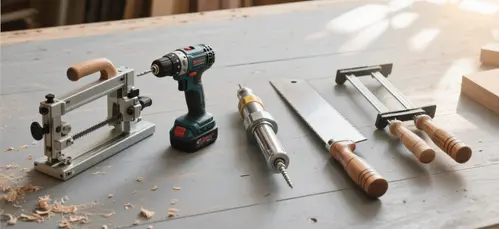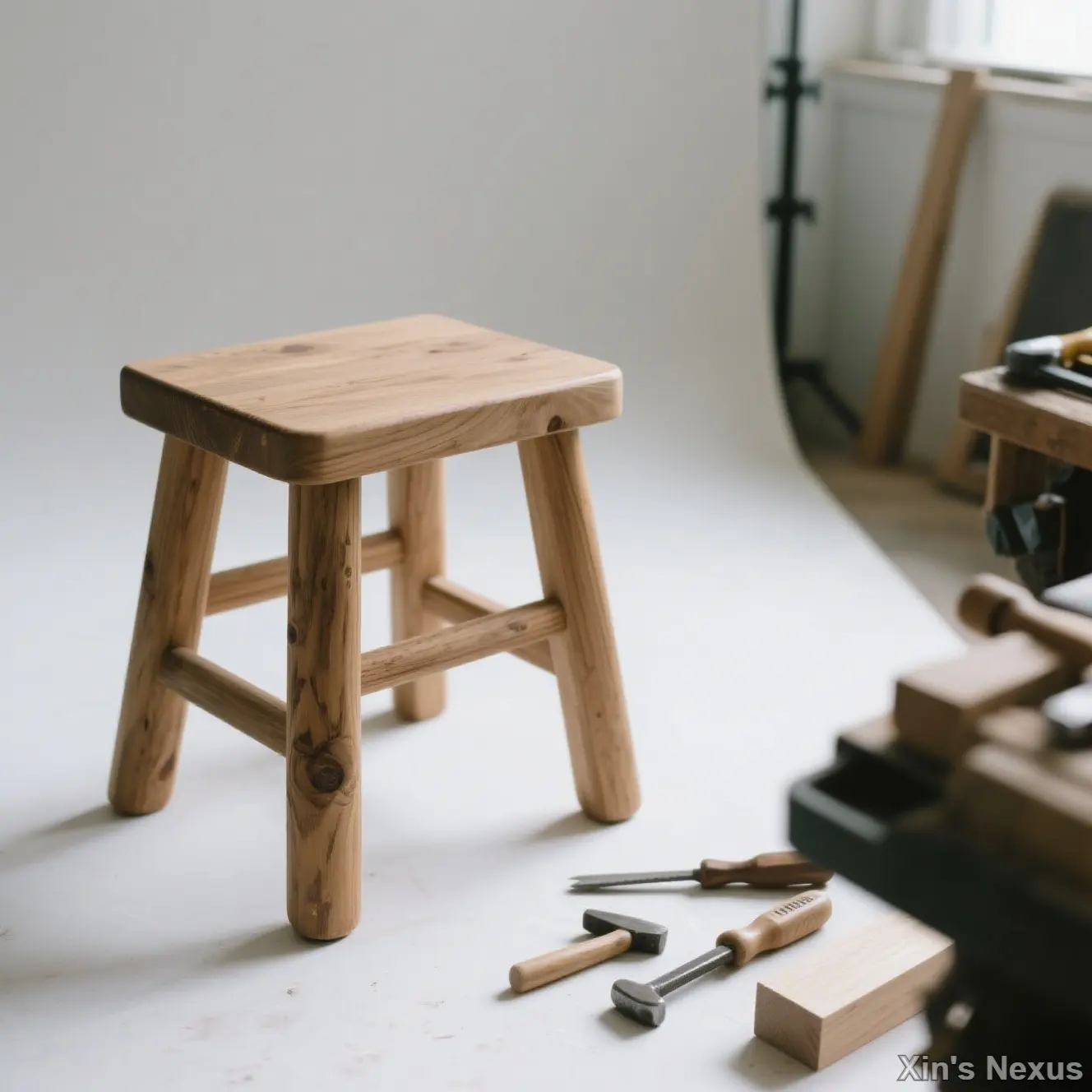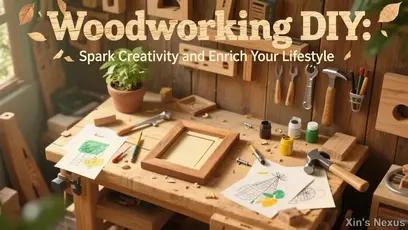Woodworking DIY: Spark Creativity and Enrich Your Lifestyle
Nowadays, woodworking DIY has transitioned from a traditional craft to a trendy way of life. Whether you’re crafting a simple coffee table or constructing a one-of-a-kind storage cabinet, woodworking DIY not only adds a unique touch to your home’s decor but also lets you savor an incomparable sense of achievement. This piece will take you on a journey into this creative realm by exploring the allure of woodworking DIY, tool choices, and practical techniques.
The Allure of Woodworking DIY
The main appeal of woodworking DIY is that it enables people to unleash their creativity and relish the joy of hands-on creation. In this rapidly changing world, many yearn for distinctive home furnishings, and handcrafting perfectly caters to this desire. Through woodworking DIY, we can not only showcase our personal style but also revel in the fulfillment that comes from making things with our own hands. Numerous woodworking enthusiasts feel that the process of handcrafting is similar to meditation, which can relieve stress and bring inner peace.
The Psychological Advantages of Woodworking DIY
Woodworking DIY is more than just creating physical items; it’s also a form of spiritual therapy. When you concentrate on a project, all your worries seem to vanish. Many individuals find a profound sense of contentment during the making process. This sense of accomplishment stems from watching their ideas turn into concrete, touchable results. Moreover, hands-on crafting can enhance our practical abilities and problem-solving skills, both of which have a positive effect on our daily lives.
Must-Have Tools for Woodworking DIY
_cleanup.webp)
Having the right tools is vital before embarking on any woodworking project. Here are some commonly used woodworking tools that are necessary for both beginners and seasoned woodworking lovers.
| Tools | Description |
|---|---|
| Electric saw | Ideal for cutting wood quickly, boosting work efficiency. |
| Hand saw | Perfect for intricate cutting tasks, particularly in tight spaces. |
| Drill | Used to make holes in wood, making assembly and fixing accessories easier. |
| Planer | Helps smooth the wood surface, improving its visual appeal. |
| Screwdriver | Serves to tighten screws, ensuring the structure is stable. |
Factors to Consider When Choosing Tools
When picking tools, your skill level and the project’s requirements must be taken into account. If you’re new to woodworking, manual tools are a good option as they’re relatively easy to use and cost less. As you gain more experience, you can gradually invest in efficient electric tools to speed up your work.
Planning Your Woodworking Project
_cleanup.webp)
A detailed plan is essential before starting any woodworking DIY project. It not only helps you organize your thoughts but also prevents the waste of time and resources during the process. Drawing sketches and dimension diagrams is a great planning method.
Why Sketches Matter
Sketches don’t need to be highly detailed; hand-drawn ones work fine. The key is to clearly show the project’s structure and dimensions. Labeling each part’s length and width in the sketch can help you avoid errors when selecting materials and cutting. Additionally, a good sketch can stimulate design inspiration, allowing you to make continuous adjustments and improvements as you work.
Useful Tips and Advice
_cleanup.webp)
There are several handy tips that can make your woodworking DIY process go more smoothly. For instance, using clamps to secure the wood prevents it from shifting while cutting. Also, regularly checking the project’s progress ensures that each step is done according to plan.
Common Issues and Their Fixes
_cleanup.webp)
Newcomers to woodworking DIY may face problems like wood warping or gaps at joints. To prevent these, choose dry wood and leave enough space during installation to allow the wood to expand and contract. For joints, using wood glue or screws can strengthen them, increasing the structure’s stability.
Popular Woodworking DIY Projects
_cleanup.webp)
Woodworking DIY covers a wide range, from simple furniture to complex decorations and even functional small items. Here are some recommended projects suitable for woodworking enthusiasts of all skill levels.
Simple Coffee Table
A coffee table is a common piece of furniture in many homes, and making a simple one is perfect for beginners. Select the right wood, design the style based on your needs, and then follow your sketch to create it. Whether it’s round or square, with proper cutting and assembly, you can make a coffee table with a unique style.
DIY Bookshelf
A bookshelf is another popular DIY project, especially for book lovers and students. When designing, consider the height and width of your books to ensure the shelf is stable and practical. If you’re creative, you can add personalized decorations to the bookshelf to make it a focal point in your home.
Crafting Decorations
Besides practical furniture, woodworking DIY allows you to create various decorations, making your living space more lively. From simple photo frames to complex carvings, these small items not only enhance your home’s beauty but also become cherished family memories.
DIY Storage Box
Storage boxes are essential in many homes as they help organize the space. When designing, you can choose different sizes and shapes and add personalized decorations to the outside. This not only makes storage more practical but also adds fun to your home’s atmosphere.
Outdoor Furniture
For families with a yard or balcony, making outdoor furniture is a great idea. A simple set of outdoor tables and chairs lets you and your family and friends enjoy nature together. When selecting wood, opt for weather-resistant types like champagne wood or pressure-treated wood to make them last longer.
_cleanup.webp)
FAQs
What are the basic tools for woodworking DIY beginners?
Basic tools for beginners include electric saws, hand saws, drills, planers, and screwdrivers. These tools can help you complete basic woodworking tasks.
How to pick the right wood for DIY projects?
The choice of wood depends on the project’s needs and where it will be used. Hardwoods like oak are good for making furniture, while pine is suitable for small DIY items.
What safety measures should be taken in woodworking DIY?
When doing woodworking DIY, always wear safety glasses and earmuffs. Be extra careful when using electric tools to avoid accidents. Keeping your work area clean also helps reduce risks.







